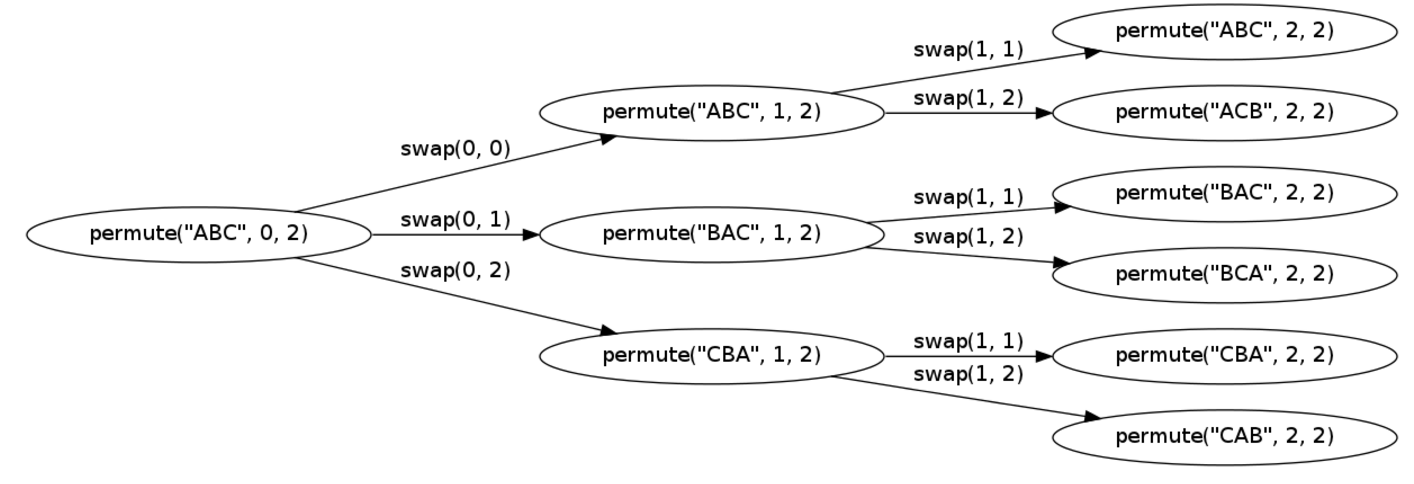- single result
- result is serial steps (Hanoti) DFS(Maze)
FUNCTION MoveTower(disk, source, dest, spare):
IF disk == 0, THEN:
move disk from source to dest
ELSE:
MoveTower(disk - 1, source, spare, dest) // Step 1 above
move disk from source to dest // Step 2 above
MoveTower(disk - 1, spare, dest, source) // Step 3 above
END IFResult is a set( permutation)
void permute(char a[], int i, int n){
int j;
if (i == n)
cout << a << endl;
else {
for (j = i; j <= n; j++) {
swap(a[i], a[j]);
permute(a, i+1, n);
swap(a[i], a[j]);
}
}
}
int j;
if (i == n)
cout << a << endl;
else {
for (j = i; j <= n; j++) {
swap(a[i], a[j]);
permute(a, i+1, n);
swap(a[i], a[j]);
}
}
}
